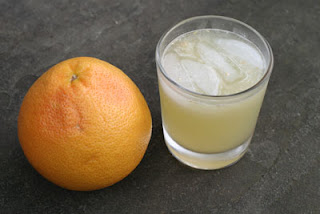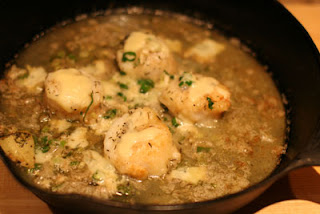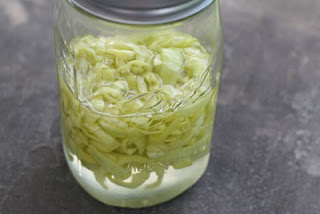Ingredients in a can of Fresca:
carbonated water, citric acid, concentrated grapefruit juice, potassium citrate, potassium sorbate, potassium bezoate, and EDTA, aspartame, acesulfame potassium, acacia, natural flavors, glycerol ester of rosin, brominated vegetable oil, carob bean gum, phenylketonurics (contains phenylalanine).
Ingredients in a glass of homemade Fresca soda using the recipe from the Artisan Soda Workshop:
1 ruby red grapefruit, halved
2 tspn agave syrup
seltzer water, as needed
In reviewing this book, we tried both versions of Fresca and I have to tell you that the difference in taste and price is negligible. So why do so many people choose to drink soft drinks packed with mysterious chemicals? There are probably many answers including convenience, ignorance, and constant suggestions from the powerful marketing machines of Coke, Pepsi, and other major soft drink producers. For those looking for other alternatives or for those looking for some new, mostly non-alcoholic beverage recipes, this book is for you.
Andrea Lynn has created an interesting book with 70 homemade soda recipes. The first chapter, entitled Homemade Soda Copycats, provides all-natural recipes for almost all of the mass produced sodas on the market today. Additional chapters focus on beverage recipes that feature herbs and spices, cherries and berries, and seasonal flavors. There are also many recipes for aqua frescas, teas, and floats. The author draws from her experience as a food writer and recipe developer to describe the history of soda and its mass popularity around the world.
Sodas were first produced in the United States at the beginning of the 19th century. Carbonated water was believed to have medicinal benefits. So by the mid 1800s, carbonated water became popular at pharmacies across the country. Eventually small companies began selling syrup directly to pharmacies. Some of these companies, like Coke and Pepsi, became quite successful and dominate the soda market to this day. New artisinal soda makers have recently grown in popularity however. Companies like
P & H Soda in Brooklyn and
Franklin Fountain in Philadelphia, have gone back to the basics to create pure, natural products that promote good health.
SodaStream is also experiencing record growth by enabling consumers to easily make beverages of their choice at home.
As you may have surmised from the introduction of this review, homemade sodas are healthier than their mass-produced counterparts because most store bought sodas are full of chemicals and high fructose corn syrup. Although it is a little bit of work to make your own soda, you control everything that goes into your beverage, you know exactly what you are consuming. You also cut down on the amount of sugar you are consuming and you can explore alternative sweeteners such as brown sugar, agave syrup, or fresh fruit.
In our review, we tried the recipes for
Fresca and
Cherry Limeade. The recipe for Fresca was outstanding. It was simple to make and it tasted exactly like the store bought version. It features agave syrup, a great sweetener to use because it is not highly processed and is slowly absorbed. The grapefruit gives you an ample dose of vitamin C. The perfect drink - tastes great and its great for your health! The cherry limeade recipe tasted good as well but it tasted very different from the one offered at Sonic. However, with a little trial and error you could probably tweak this recipe to suit your needs. Overall, this is an interesting book that provides a rare look at the early days of soda shops in the USA. It also provides a great starting collection of beverage recipes for people that are interested in improving their diet by making all-natural sodas at home. We give the Artisan Soda Workshop four stars out of five.
 United States [ print this recipe for The Bronx Bomber Sandwich ]
United States [ print this recipe for The Bronx Bomber Sandwich ]



 Italy [
Italy [ 





 France [
France [ 


 If you have been following the Olympics in London, tomorrow will most likely be a long morning of TV viewing for you so you need to make proper preparations for breakfast. I can't think of a more perfect selection for this meal than the Full English Breakfast. Also know as a "Full English" or a "Fry Up", this is an old school breakfast popular throughout the UK.
If you have been following the Olympics in London, tomorrow will most likely be a long morning of TV viewing for you so you need to make proper preparations for breakfast. I can't think of a more perfect selection for this meal than the Full English Breakfast. Also know as a "Full English" or a "Fry Up", this is an old school breakfast popular throughout the UK. England [
England [ 
